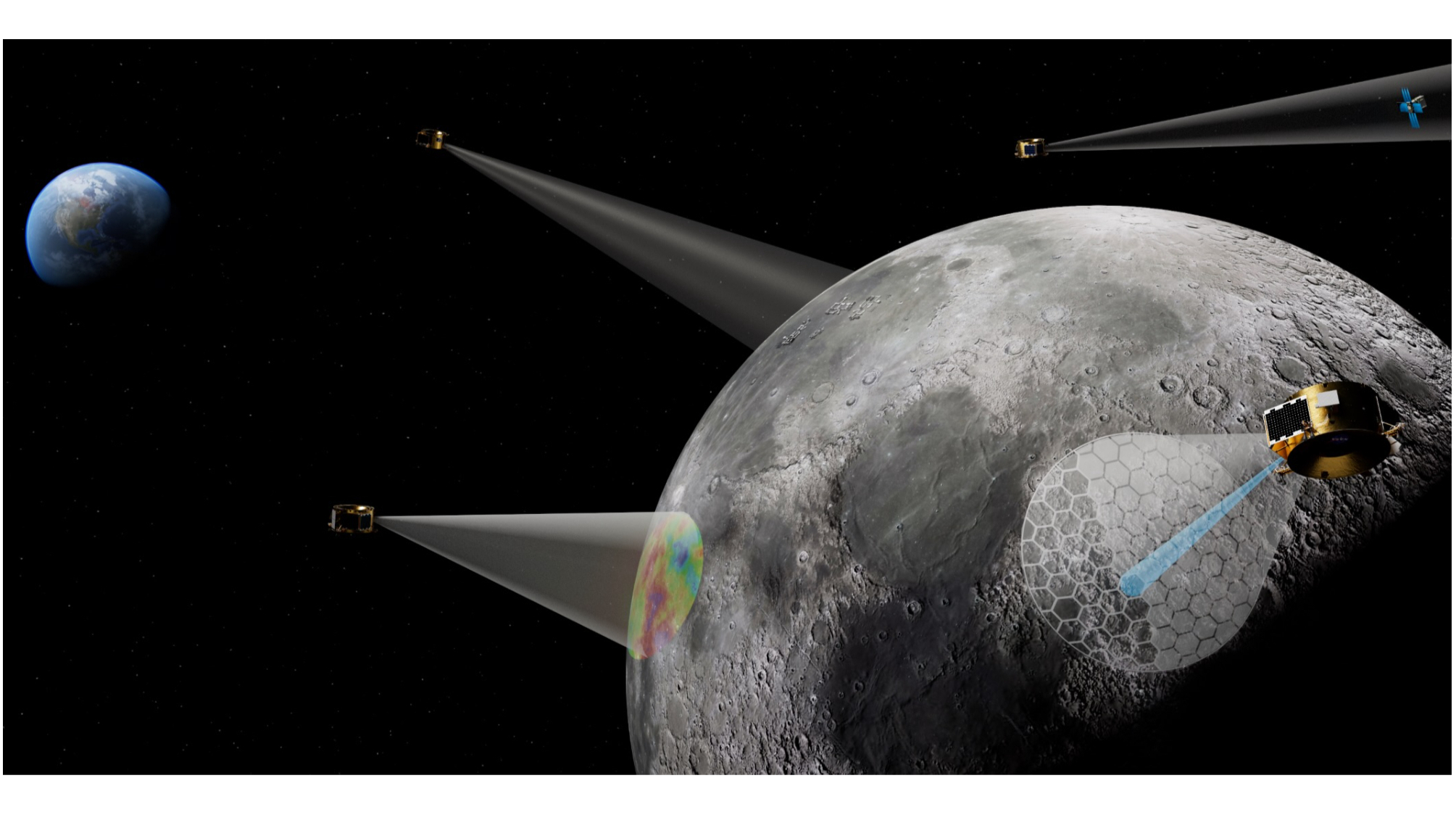What is a moon halo?
Have you ever seen a strange ring of light around the moon and wondered what it was?
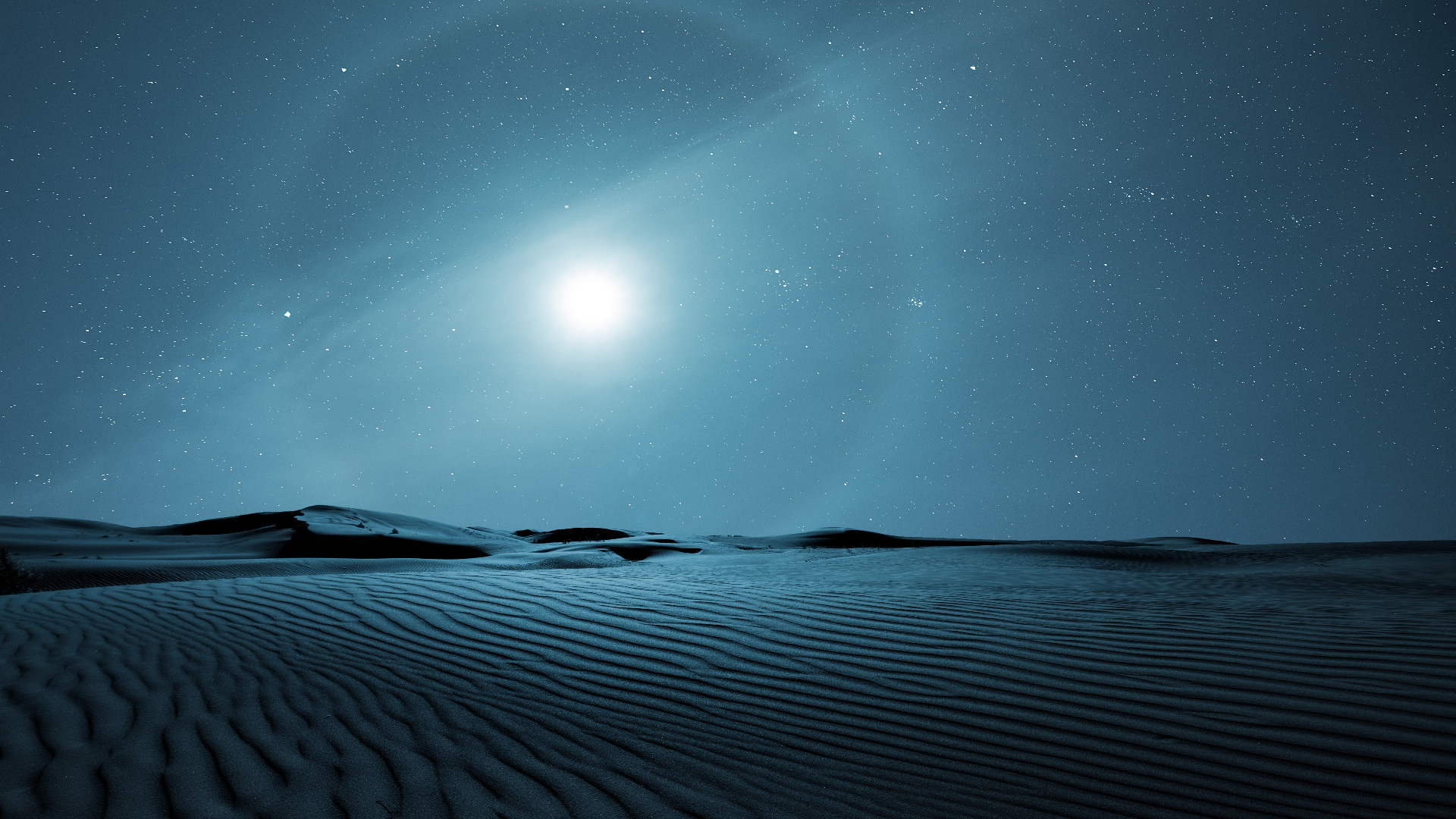
The moon's halo or lunar halo is an optical illusion that causes a large bright ring to surround the moon. This striking and often beautiful halo around the moon is caused by the refraction of moonlight from ice crystals in the upper atmosphere.
In effect, these suspended or falling flecks of ice mean the atmosphere is transformed into a giant lens causing arcs and halos to appear around the moon or the sun depending on whether the effect is happening during the night or day respectively.
The effect is so striking that it has given rise to a wealth of folklore and superstition, and was used not entirely unsuccessfully used to predict the onset of bad weather.
Related: 15 stunning places on Earth that look like they're from another planet
What is a moon halo and how does it form?
A lunar halo is created when light is refracted, reflected, and dispersed through ice crystals suspended in cirrus or cirrostratus clouds located at an altitude of 20,000 feet (6,000 meters) and higher, up to 40,000 feet (12,000 meters).
The shape of these ice crystals focuses light into a halo around the moon or the sun. As ice crystals are usually hexagonal these lunar halos are almost always the same size, with the moon (or the sun) sitting 22 degrees from the other edge of the halo — roughly the width of an outstretched hand at arm's length.
The uniform 22-degree radius and 44-degree diameter of halos mean that both solar and lunar halos are often referred to as 22-degree halos.
This uniformity in diameter arises because ice has a specific index of reflection and the hexagonal shape of an ice crystal means when its sides are extended it forms a prism with a 60 -degree apex angle. This results in an angle of minimum deviation for light passing through the ice crystal of 21.84 degrees.
These ice crystals also demonstrate a prism effect that separates white light from the sun or is reflected by the moon into various individual colors just like the atmospheric effect that creates a rainbow.
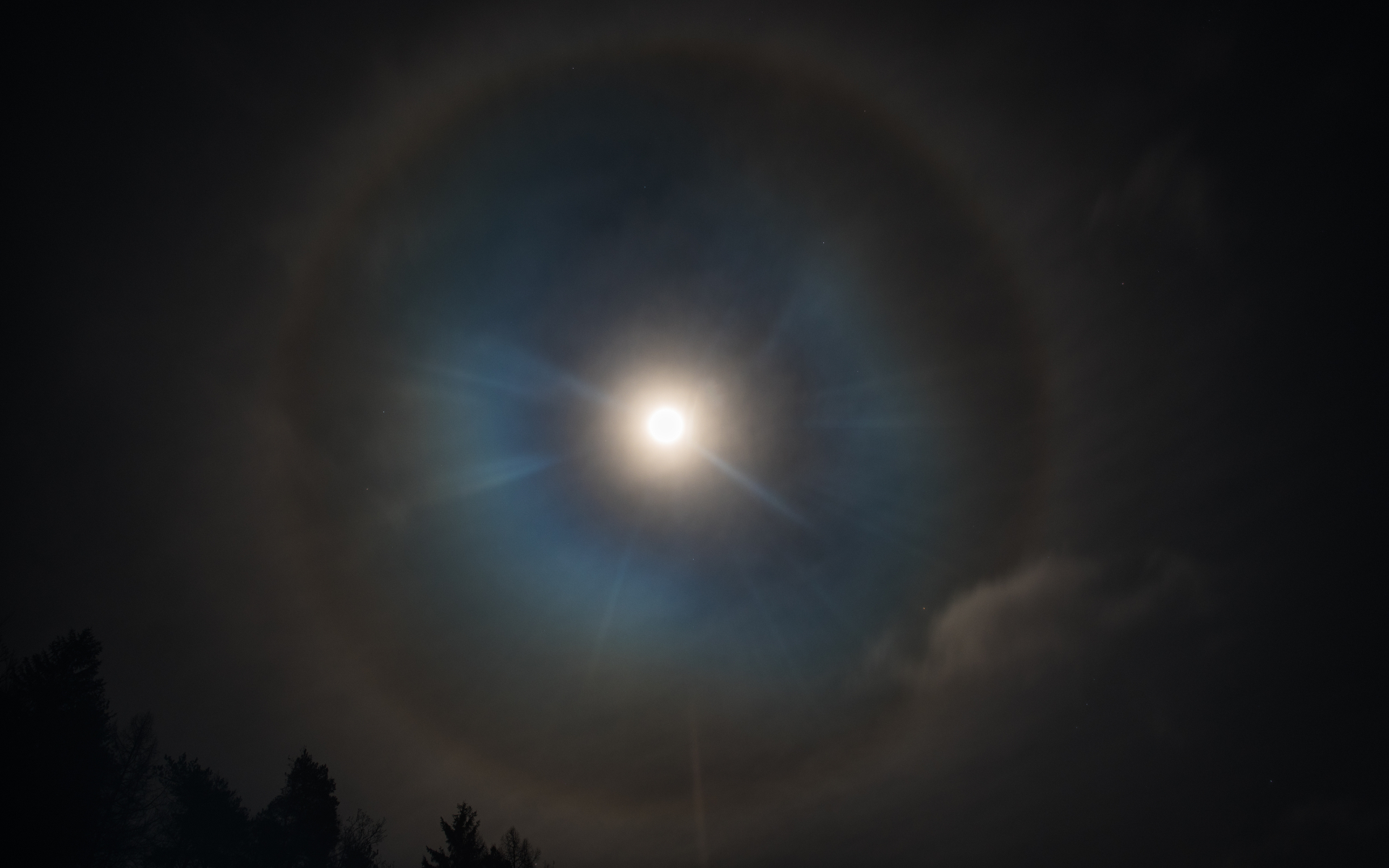
This happens because different wavelengths of light, thus different colors, experience a different degree of refraction when they pass through a prism.
This means that lunar halos can be very lightly tinted with rainbow colors, longwave red light on the inside, and shortwave blue light on the outside. Colors in the lunar halo are often too weak to be seen with the naked eye and may be much more visible around the sun because of how much brighter it is than the moon.
Related: What are sundogs and how do they form?
The optical properties of the ice crystals also mean that they don't direct light back toward the center of a halo. This means that the sky inside a 22-degree halo can often appear darker than the surrounding sky making it appear like a "hole in the sky."
Do lunar halos have company?
Lunar halos are often accompanied by smaller more colorful rings that are caused by refraction and reflection of light by water molecules in the atmosphere called coronas. Lunar halos aren't connected to coronas, which are around half as wide as halos with a radius of around 10 degrees, as these optical effects are caused by water droplets rather than ice crystals.
In addition to this, refraction from ice crystals can also create double halos. On rare occasions, these double halos even possess spokes radiating out to their outer edges.
Not only are lunar halos closely related to solar halos, but this icy refractive effect can also create rings opposite these astronomical bodies, or pillars of light, and even "sun dogs" — concentrated patches of sunlight seen 22 degrees to the left or right of the sun that can appear in pairs.
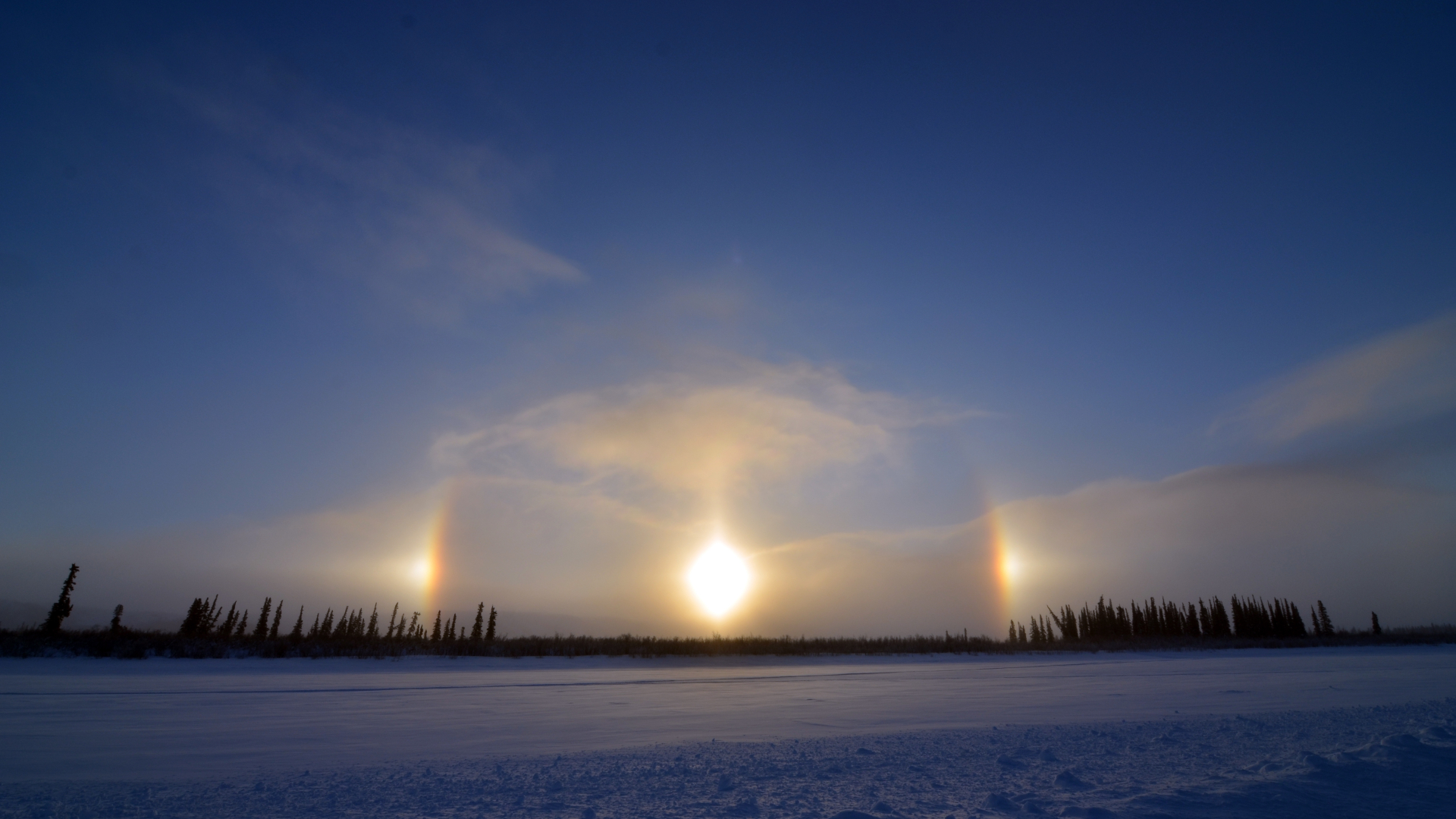
Halos with a radius of 22 degrees can also be accompanied by 46-degree radius halos, which can also occur independently too. Larger and much fainter than 22-degree halos, 46-degree halos form when sunlight enters randomly oriented hexagonal ice crystal at its face and exits through its base.
This causes light to be dispersed at a wider angle — one greater than the angle of minimum deviation — creating a halo with a more blurry and diffuse outer edge.
On its science site, NASA documents a rare incidence of a quadruple lunar halo. The four halos around the moon were sighted on a winter night above Madrid, Spain, in 2012. Falling hexagonal ice crystals created a 22-degree halo, while column ice crystals created a rarer circumscribed halo. More distant ice crystals created a third rainbow-like arc 46⁰ from the moon. Finally, part of a fourth whole 46-degree circular halo was also visible completing the quadruple lunar halo that NASA described as "extremely rare, especially for the moon."
Related: Red lightning: The electrifying weather phenomenon explained
How common are moon halos: When and where to see them
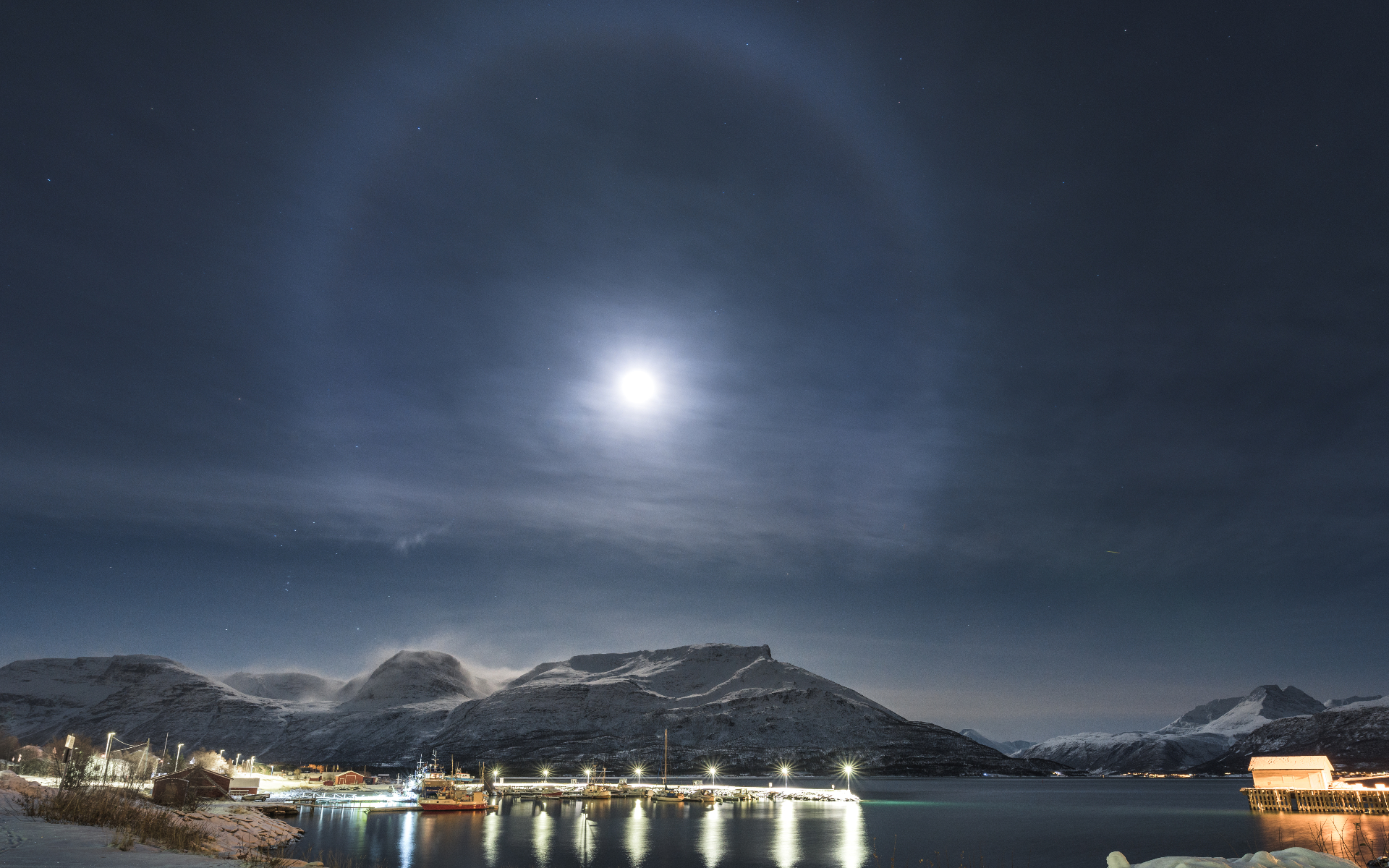
Farmers' Almanac describes lunar halos as being fairly common, meaning there is a good chance of spotting one, as long as you are willing to brave cold and possibly wet weather. That's because though lunar halos can happen at any time of year, they are more common in winter.
A moon halo can be seen with the unaided eye, but if you're looking for a telescope or binoculars to observe the moon in more detail, our guides for the best binoculars deals and the best telescope deals now can help. Our best cameras for astrophotography and best lenses for astrophotography can also help you prepare to capture an impressive lunar photo.
Related: Ultimate guide to observing the moon
Because cirrus clouds are the usual suspects behind lunar halos, this optical illusion is more likely to be visible when a bright full or nearly full moon is veiled by thin cirrus clouds. This means unlike hunting other astronomical events and objects, cloudy conditions can actually be a bonus when it comes to spotting lunar halos.
The cirrus clouds are transparent and cover wide areas of the sky — up to thousands of miles — producing a host of other halo effects like white or colored rings, spots, or arcs of light in addition to solar and lunar halos.
These clouds can be so thin and finely dispersed that sometimes lunar and solar halos are the only way of knowing they are actually present in the sky.
Myths and cultural significance of moon halos
According to the Farmers' Almanac, in folklore, the observation of a lunar halo has been associated with forthcoming unsettled weather, especially during winter.
This is something that has often been proven true thanks to the phenomena behind these halos. This is because cirrus clouds sometimes indicate an approaching warm front which is, in turn, associated with a low-pressure system, a storm that can carry with it a sudden drop in temperature, heavy rain, hail, and even thunder and lightning.
Because cirrus clouds often signal rain falling within the next 24 hours the atmospheric optical illusions they cause became embedded in "weather lore" becoming an early method of empirically predicting the weather before the development of metrology.
One striking and poetic example of this folklore is a proverb listed in the book Dictionary of Proverbs by George Latimer Apperson.
"If the moon show a silver shield,
Be not afraid to reap your field;
But if she rises haloed round,
Soon we'll tread on deluged ground."
This system isn't particularly reliable when predicting bad weather as cirrus clouds aren't always a sign of an approaching warm front.
Another folklore idea surrounding lunar halos is also worth being skeptical of is that by counting the stars encircled by the halo a person could tell how many days until the bad weather moved in.
More stars meant more time until the rain set in, and fewer stars signified that bad weather wasn't far from descending.
Additional Reading
Ice crystals aren't the only objects that can bend light and create stunning optical illusions. Astronomical bodies much further afield than the moon like distant galaxies can be blurred, stretched, magnified, and even caused to appear at multiple points in the sky when objects of tremendous mass warp the very fabric of spacetime between them and Earth. The European Space Agency (ESA) explains the phenomenon of gravitational lensing.
Bibliography
Ring Around The Moon? Here's What It Means, Farmers' Alamac, [Accessed 11/19/22], [https://www.farmersalmanac.com/ring-around-the-moon-9657]
22° Halo around the moon, Atmospheric Optics, [Accessed 11/19/22], [https://atoptics.co.uk/halo/circmoon.htm]
Moon Halo, Hyperphysics, [Accessed 11/19/22], [http://hyperphysics.phy-astr.gsu.edu/hbase/atmos/moonhalo.html]
Quadruple Lunar Halo Over Winter Road, NASA Science, [Accessed 11/19/22],[https://science.nasa.gov/quadruple-lunar-halo-over-winter-road]
"Disk with a hole" in the sky, Atmospheric Optics, [Accessed 11/19/22], [https://atoptics.co.uk/halo/circ2.htm]
Apperson. G. L., Dictionary of Proverbs, Wordsworth Editions Limited, [2006], ISBN 1 84022 311 1
Join our Space Forums to keep talking space on the latest missions, night sky and more! And if you have a news tip, correction or comment, let us know at: community@space.com.
Breaking space news, the latest updates on rocket launches, skywatching events and more!

Robert Lea is a science journalist in the U.K. whose articles have been published in Physics World, New Scientist, Astronomy Magazine, All About Space, Newsweek and ZME Science. He also writes about science communication for Elsevier and the European Journal of Physics. Rob holds a bachelor of science degree in physics and astronomy from the U.K.’s Open University. Follow him on Twitter @sciencef1rst.
-
karlp295 It is a common phenomenon rather than an optical illusion, I think. It is caused by the atmosphere between the Moon and us.Reply -
billslugg Moon and Sun halos originate when ice crystals form in the upper atmosphere. This requires temperatures below -30°F and a supersaturated atmosphere. This is usually caused by a warm front over riding cooler air and being thrust very high up. Depending on the particular combination of temperature and percent supersaturation, different type of crystals will form. In the case of a halo they are simply 6 sided columns oriented randomly. Light traversing a 120° corner preferentially is deflected at 22° thus causing the halo.Reply
When a column falls into a slightly warmer zone it can develop a six sided plate at one end and become a "capped column" thus falling like a dart. The six sides are now oriented perpendicular to the Earth's surface and the result is a horizontal band with parhelia at the preferred 22° angle.
There are other crystals possible along with many combinations thus many different types of arcs and halos although most of these are very rare.
